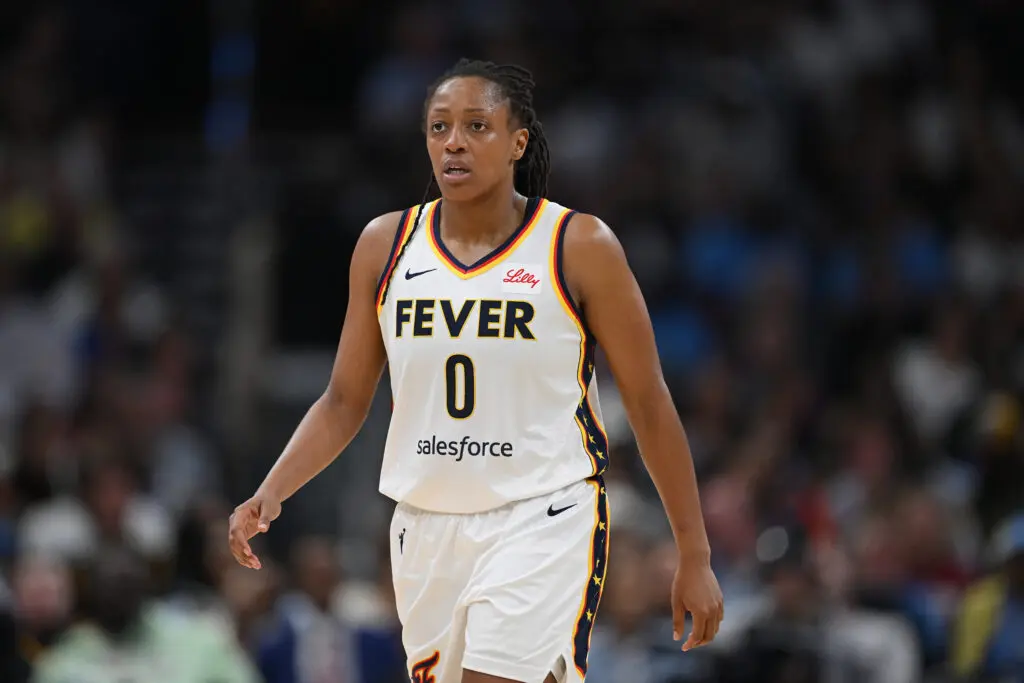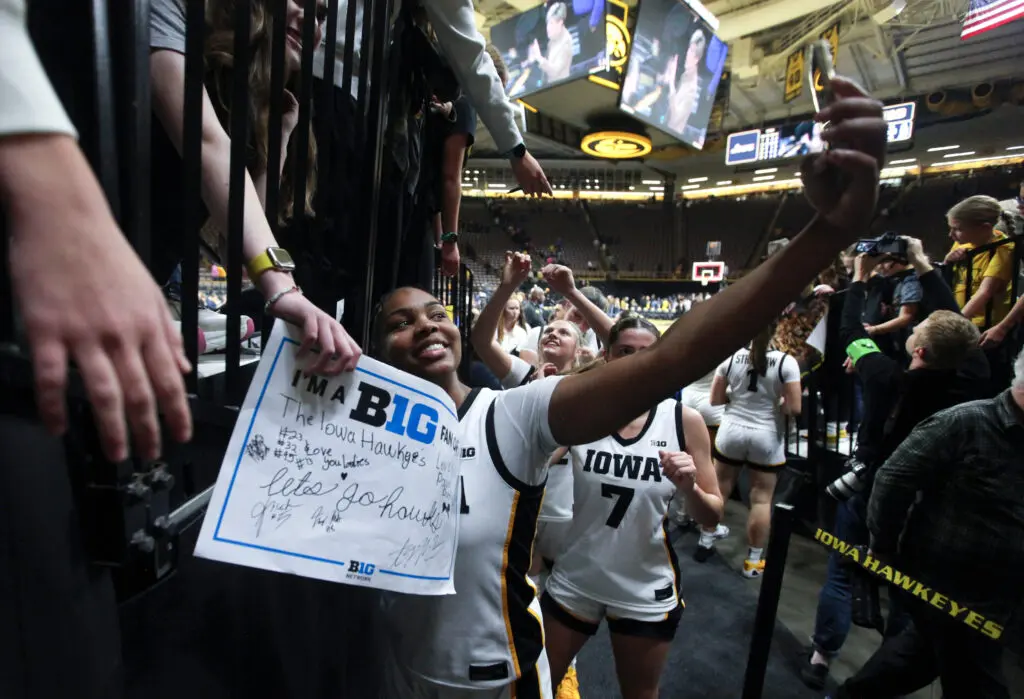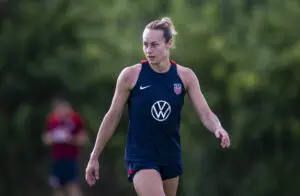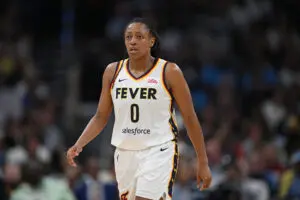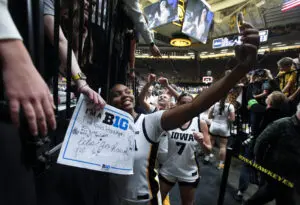The Minnesota Lynx entered their first game of the 2021 WNBA playoffs with confidence after a resilient regular season.
Battling through injuries and player absences during an 0-4 start, the Lynx reversed course and started climbing in the WNBA standings. They finished the season third overall with a 22-10 record and received a first-round bye, setting up a second-round, single-elimination matchup with the sixth-seeded Chicago Sky.
The Sky took a four-point lead into halftime of the Sept. 26 game and never looked back, pulling away in the second half for an 89-76 win on Minnesota’s home court.
Just like that, the Lynx’s season was over. With it came renewed questions about the WNBA’s playoff format, which features two rounds of single-elimination games followed by best-of-five semifinals and Finals series.
“It has become clear that the current playoff format no longer serves the product the athletes are putting out on the floor every night,” Lynx point guard Layshia Clarendon said days later. “The players and the fans deserve a better playoff experience that honors the hard work put in throughout the regular season. I’m confident the league sees this as well and will act accordingly!”
The single-elimination playoff experience was different for Phoenix Mercury guard Skylar Diggins-Smith. The Mercury came into the playoffs as the fifth seed after overcoming a slow start to win 10 of their last 13 regular season games. They rode that momentum to wins in the first two rounds and a place in the semifinals against the No. 2 Las Vegas Aces.
“Obviously, it’s tough with this format. If you don’t really get a top-four or a top-two position, you gotta play in one of these games,” Diggins-Smith told reporters after the Mercury upset the No. 4 Seattle Storm in the second round. “We made it to a series, we earned a series, and that’s really all it is. It’s not like we won a championship or anything. That’s what we’re after. On to the next.”
Sky tying it up! pic.twitter.com/pWRr52Xbgd
— Phoenix Mercury - X (@PhoenixMercury) September 26, 2021
The WNBA playoffs weren’t always set up this way.
In 2015, the Lynx were a favorite to win their third WNBA championship. Before they could play for the title, however, they had to win two best-of-three playoff series against the Los Angeles Sparks and the Mercury.
Back then, the playoffs featured eight teams split and seeded into Eastern and Western conferences. The conference semifinals and finals series filtered into a best-of-five WNBA Finals, and no team had to play a single-elimination game. Even though Game 1 of the 2015 Finals between the Lynx and Indiana Fever was the most watched on ESPN/ABC networks since 1998, viewership for the first two rounds of the playoffs was down 13 percent over 2014. WNBA playoff ratings overall had taken a hit.
At the end of the season, the WNBA Board of Governors got together to review and discuss all aspects of the league, including the playoffs. They formed a consensus and, in January 2016, the board announced a new playoff format ahead of the league’s 20th anniversary: The top eight teams with the highest regular-season winning percentage would make the playoffs and be seeded based on their overall records, doing away with conferences. The first and second rounds would be single elimination, and teams would be re-seeded after each round. The top two seeds would receive first- and second-round byes.
The goal was to inject excitement into the WNBA playoffs, increase viewership and attract new fans in the 20th year of the WNBA.
The playoffs have remained the same ever since.
“I like this format. I like single elimination for both of the first two rounds. I think it’s compelling television and will help the ratings,” said WNBA analyst Debbie Antonelli. “I thought some players looked tired in Round 2, and we don’t want sloppy play in a crowded sports television market in September and October.”
Crowded sports market is an understatement. By the time the WNBA playoffs begin in September, the NFL is already in full swing, the MLB is gearing up for its postseason and the NBA is getting ready to start its preseason.
Given the fall sports landscape, it’s understandable that the WNBA would want to figure out a way to make the playoffs more appealing to viewers. But have the single-elimination games actually helped with ratings? Not necessarily.
According to Jon Lewis of Sports Media Watch, the second-round game between Seattle and Phoenix drew 311,000 viewers on ABC, making it the most-watched single-elimination game since the Lynx played the Sparks in the first round in 2018 (343,000 on ESPN2).
“So, the single-elimination games have not been overwhelmingly big draws, and the Game 5s in the semifinals — when they do occur — tend to do better,” said Lewis, who also noted that Chicago’s double-overtime win over Connecticut in Game 1 of the semifinals outperformed all single-elimination games since 2016.

But ratings are only part of the playoff conversation. The league has to think about travel schedules, since WNBA teams fly commercial, and team owners have to consider whether they’ll be able to sell enough seats during first- and second-round multi-game series in order to make it worthwhile. Extending the WNBA postseason also means running up against television scheduling conflicts and competing with fall pro sports for viewership.
“How many regular season games from a business aspect of an organization are needed or wanted for our league, for our teams? And then from there, what do playoffs look like with that footprint?” asked Storm head coach Noelle Quinn. “I think that’s the biggest thing that I’m learning — there’s some strategy that goes into it, like there’s a reason why the playoffs have continued to be the way that they are. There are talks about changing it, but within that change, how does that impact the days of our season and could that be changed?”
Proposals for playoff re-formatting include decreasing the number of playoff teams from eight to six, keeping the first-round single-elimination games and making the second round a three-game series or structuring each round as series.
“I think if we keep eight teams in the playoffs, I like the format (as it is),” said Antonelli. “The only way to make it fair to the three and four seeds is to have less teams. I think the decision for the league is eight teams or six teams in the playoffs. Six teams would be half the league — that would seem fair to me. But if we’re going to have eight teams, I love single elimination in the first two rounds because of television.”
Added Quinn: “The single-elimination game for the first round maybe brings some excitement, but the third and fourth seed … I mean, you look at Minnesota and what they did at the end of the year, you look at how Phoenix started playing at the end, it just gives teams a chance to duke it out in the playoffs with a series and creates these rivalries.
“At least a second-round series, I’m kind of leaning towards now as well. Best out of three, whatever it is, I think those top seeds deserve that. And I’m not just saying it because we were in that spot.”
🐐 x 2⃣ pic.twitter.com/sJMdxKbYKF
— Seattle Storm (@seattlestorm) September 26, 2021
Sue Bird, who may have played the last playoff game of her illustrious career in Seattle’s second-round loss, has been vocal about the WNBA’s current postseason format. She would prefer the WNBA playoffs have no byes, no single eliminations — just toss the ball up and see who comes out on top in the hard-fought series.
“If it’s gonna be eight teams, it has to be series. Because you’re gonna have a player like Arike Ogunbowale and you’re only gonna see her once?” Bird said, referencing the Dallas Wings’ first-round ouster this year.
“You don’t even have a chance to really get going in a single-elimination game. And I get the excitement, so there is that aspect for fans. But I think it’s more exciting to see a player like (Ogunbowale), a young player, an exciting player, whose team finishes wherever they finish — six, seven, eight — and you get to see her three times? Two or three times? That’s also exciting from an entertainment standpoint.”
When the 2021 playoffs end and a new champion is crowned, the WNBA will reevaluate the playoffs along with every other checklist item from the summer. Whether they address the calls for format changes depends on a variety of factors. Regardless of the outcome, it’s hard not to think that single-elimination games limit the amount of quality basketball, reach and exposure of the WNBA.
In a multi-series format, maybe the Minnesota and Chicago matchup would have gone to three games. Maybe Bird would still be bumping up against Diana Taurasi instead of packing up her locker. Maybe the semifinal matchups would look a lot different than they do now, with the Sky and Mercury each one win away from advancing to the Finals. Maybe not. The fun thing about a series is it gives players, coaches, owners and fans more than just one game.
In the end, maybe that’s what everyone who invests time in the league deserves.
Lyndsey D’Arcangelo is a contributing writer at Just Women’s Sports, covering the WNBA. She also contributes to The Athletic and is the co-author of Hail Mary: The Rise and Fall of the National Women’s Football League. Follow Lyndsey on Twitter @darcangel21.


